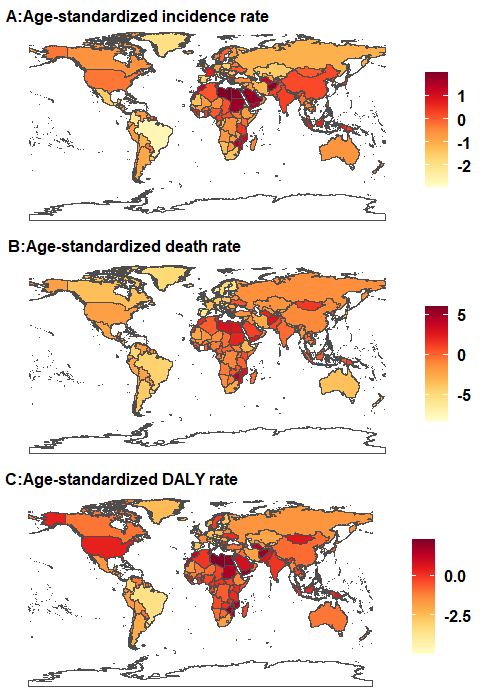A study published in Neurology has found that the burden of ischaemic stroke in young adults “continues to increase” across low-socio-demographic index (SDI) regions, such as North Africa and the Middle East, and Southeast Asia. As such, the study’s authors assert that the targeted implementation of cost-effective policies and interventions represents an “urgent need” in reducing the burden of ischaemic stroke among young adults.
Corresponding author Liyuan Han (Hwamei Hospital, University of Chinese Academy of Sciences/Ningbo Institute of Life and Health Industry, University of Chinese Academy of Sciences, Ningbo, China) and colleagues state that they set out to estimate the rates of incidence, death and disability-adjusted life years (DALYs) of ischaemic stroke in young adults aged 15–49 years, and the relevant risk factors by sex, age group, and SDI, across a total of 204 countries and territories.
The researchers used data from the 2019 GBD (Global burden of diseases, injuries and risk factors) study. Estimated annual percentage changes (EAPCs) were calculated to evaluate the temporal trends from 1990 to 2019—the timeline of interest in the GBD study. Han and colleagues note that they also estimated the risk factors contributing to DALYs resulting from ischaemic stroke.
From 1990 to 2019, the global rates of age-standardised incidence (EAPC -0.97), death (EAPC -0.11) and DALYs (EAPC -0.55), of ischaemic stroke in young adults decreased, the researchers report. They further state that the largest increases in age-standardised incidence, death and DALYs rates were observed in low and low-middle SDI quintiles. At the regional level, North Africa and the Middle East, as well as Southeast Asia, showed the largest increases across all three of these parameters relating to ischaemic stroke.

“The age-standardised incidence rate was higher among young women than among young men in 2019,” Han and colleagues continue. “Globally, a high environmental temperature, high body mass index (BMI), and a high fasting plasma glucose, contributed to the largest increases in age-standardised DALYs rates between 1990 and 2019. In the same period, the largest increases in the age-standardised DALYs rates in high- and low-SDI regions were attributable to high environmental temperatures and alcohol use, respectively.”
Paying mind to these observed discrepancies in the primary risk factors related to the burden of ischaemic stroke between different SDI regions, as well as the finding that the burden of ischaemic stroke in young adults has continued to increase within low-SDI regions, the researchers conclude that “targeted implementation of cost-effective policies and interventions is an urgent need to reduce the burden of ischaemic stroke in young adults”.












